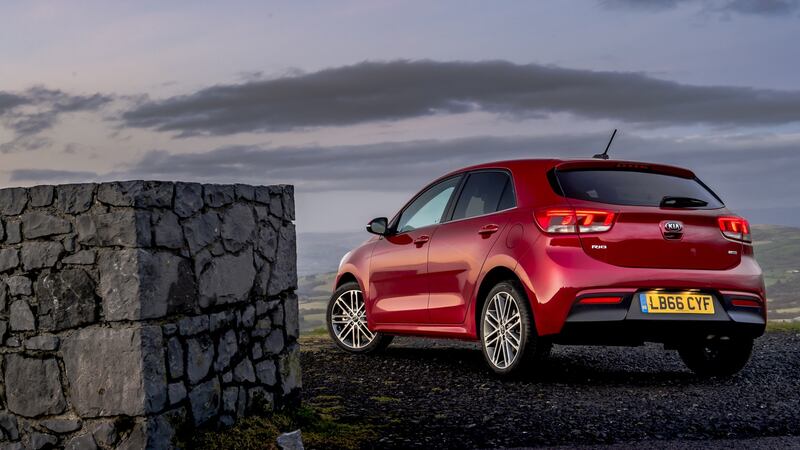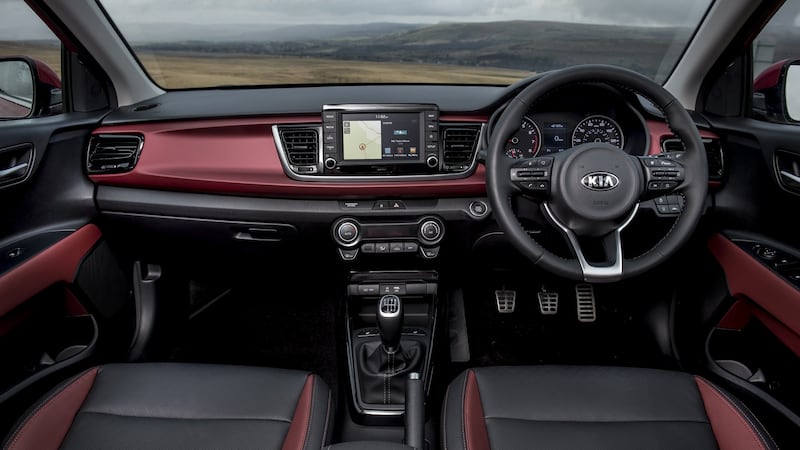I’ve always had a soft spot for a supermini. They usually combine neat packaging, sharp styling and eager on-road capability. That’s the recipe at least. Unfortunately many arrive on the market half-baked.
Even those who buy cars in the same way they buy dishwashers or fridge freezers could probably pick out a Ford Fiesta, a Renault Clio or an Opel Corsa in a car park. Admittedly, things were getting a little staid as designers and car product planners focused all their efforts on crossovers, turning even the smallest city cars into little tanks.
Then, about 2015, the focus shifted back and the results are starting to stray onto our roads. There was the sporty looking Renault Clio, the stylish Peugeot 208 and even the Toyota Yaris garnered some sharper detailing.


More recently, there has been the fantastically funky new Citroen C3 and the remarkably stylish new Nissan Micra. We could go on.
Into the mix rolls the Kia Rio. Kia is a car firm that is supposed to deliver the sporty option from South Korea. And in many ways it delivers. But I was hoping for so much more. The best-selling Kia on the Irish market is the Sportage, ticking the box as a crossover but looking much smarter than its kissing cousin from South Korea, the Hyundai Tucson. Similarly, the family hatchback Kia Cee'd is far more stylish than the Hyundai i30, and could give the likes of the Ford Focus or VW Golf a run for their money. Its 325-litre boot space borders on class leading.
The Rio, however, suffers from a motoring malaise. From the front it has great promise, partly down to the sharply-styled front grille it shares with the rest of the range. But things quickly start to get bland. And in a market where styling seems to be such a strong suit, the Rio misses a trick.
It's good looking, but that's just not good enough in this market. Step inside and everything leans towards black plastic. Again that's not a complaint reserved for Kia. It's functional and easy to master all the controls. But going back to its brief from head office in Seoul to be a sporty and youthful brand, it should be benchmarking against the Ikea sittingroom feel of the Citroen C3 and not the drabness of the usual Japanese fare.
Ample practicality
What you get instead of funky is ample practicality. Only offered in five-door these days, the car provides the sort of legroom front and rear – and boot space – that wouldn’t discredit a larger family hatchback. Park the Rio up against the likes of the previous generation Ford Focus or VW Golf and it holds its own in terms of functionality.
Along with admirable legroom, the Rio boasts ergonomically efficient switchgear and, with the right specification, a smart centre-dash screen.
On the road, the 1.25-litre 85bhp petrol engine in our test car proved peppy, but take it out of the suburbs and some of the flaws start to show. It lacks a little torque in some key rev ranges, those low- to middle-rpm figures where you are hoping to nip around a slower car in traffic or quickly turn right before the oncoming line of traffic blocks your path.
A 1-litre three-cylinder petrol version is on the way later this year, boasting a faster 0-100km/h time of 10 seconds, three seconds quicker than this larger engine. It also features a six-speed manual transmission. No prices on that model yet, but perhaps this might be the answer to the Rio’s performance woes. Certainly three-cylinder engines are the star feature for many car firms these days.
In addition, the electric steering’s ability can be patchy. It’s at times lively and then immediately too light. One of the most enjoyable traits of superminis is that you can throw them about a bit, even if the engine isn’t up to much. Yet the Rio’s handling, while comfortable and reassuring, is never as engaging as it should be for a car that wants to mix it as a sporty option. The suspension, which it shares with the Hyundai i20, is also not firm enough for our taste. In its defence it’s not as wallowing as the new Citroen C3.
Safety features
Our test model featured the added safety features of front collision mitigation with pedestrian detection and a lane-departure warning system (known as ADAS). It adds a substantial €1,300 to the bottom line. The future is here, but it comes at a price.
One of the lures to Kia remains its seven-year, 150,000km warranty. There’s a warranty war underway in the Irish market, however, so buyers need to read the small print to find the deal that best suits their needs.
Starting at €15,950 for the 1.25-litre, or €17,750 for the 1.4-litre diesel, the Rio is certainly competitive on price. And when you team it up with the warranty offer it makes sense for those looking for a practical supermini.
However, unlike several other models in the Kia range, it fails to stand out from the crowd and that must surely mean it misses the point for a brand that’s eager to avoid becoming just another middle-of-the-road offering.
Lowdown: Kia Rio 1.25 85bhp EX ADAS
Price: €19,450 as tested (starting at €15,950)
Engine: Four-cylinder in-line 1,248cc putting out 85bhp and 122Nm of torque from 4,000rpm
0-100km/h: 12.9 seconds
L/100km (mpg): 4.8 (59)
Emissions (motor tax): 109g/km (€190)
Our rating: 3/5
Verdict: Rio fails to stand out from the crowd











